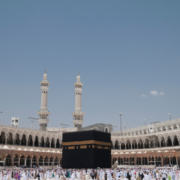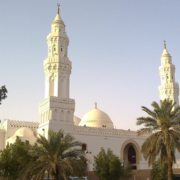
Exploring the History and Symbolism of Key Umrah Sites
Embarking on the sacred journey of Umrah offers pilgrims a profound opportunity to connect with the rich history and deep symbolism of Islam’s holiest sites. In this article, we delve into the historical significance and spiritual symbolism of key Umrah destinations, illuminating the profound legacy that shapes the spiritual landscape of Makkah and Medina.
- The Kaaba: The Heart of Islam At the center of the Masjid al-Haram stands the Kaaba, a sacred structure that serves as the focal point of Islamic worship. With origins dating back to the time of Prophet Ibrahim (Abraham), the Kaaba symbolizes the unity of the Muslim community and the timeless bond between humanity and the Divine.
- Safa and Marwa: A Testament of Faith The ritual of Sa’i, performed between the hills of Safa and Marwa, commemorates the unwavering faith and resilience of Hajar (Hagar), the wife of Prophet Ibrahim. As pilgrims traverse the distance between these hills, they honor Hajar’s steadfast trust in Allah’s providence and His infinite mercy.
- Mount Arafat: The Mount of Mercy Mount Arafat holds profound significance as the site where Prophet Muhammad (peace be upon him) delivered his farewell sermon during his final Hajj. Standing upon the plains of Arafat, pilgrims symbolically retrace the footsteps of the Prophet, seeking forgiveness and spiritual renewal in the presence of Allah.
- Mina: Symbol of Sacrifice Located just a few kilometers east of Makkah, Mina serves as the site of the symbolic stoning of the devil during the days of Hajj. This ritual commemorates the obedience and devotion of Prophet Ibrahim, who demonstrated unwavering faith in Allah’s command to sacrifice his son, Isma’il (Ishmael).
- Masjid al-Nabawi: The Prophet’s Mosque In the city of Medina lies Masjid al-Nabawi, the second holiest site in Islam and the final resting place of the Prophet Muhammad. Pilgrims visit this revered mosque to offer prayers, seek blessings, and pay homage to the Prophet, whose teachings continue to inspire millions of Muslims worldwide.
- Jannat al-Baqi: Garden of Paradise Jannat al-Baqi, located adjacent to Masjid al-Nabawi, is a sacred cemetery that houses the graves of many companions of the Prophet Muhammad and members of his family. Pilgrims visit this tranquil garden to honor the memory of these revered figures and to reflect on the fleeting nature of life.
As pilgrims embark on their Umrah journey, they are invited to immerse themselves in the rich tapestry of history and symbolism that defines these sacred sites. Through reflection, reverence, and spiritual contemplation, pilgrims can deepen their connection to the timeless legacy of Islam and draw closer to the Divine presence that permeates these hallowed grounds.
Tags:Umrah
Recent Posts
December 8, 2020admin
The Significance of Spiritual Reflection During Umrah (Important Points)
December 8, 2020admin
Navigating Islamic Etiquette: Dos and Don’ts for Umrah Pilgrims
December 8, 2020admin
Exploring the History and Symbolism of Key Umrah Sites
All Categories
Tags

Wildlife
Thailand





